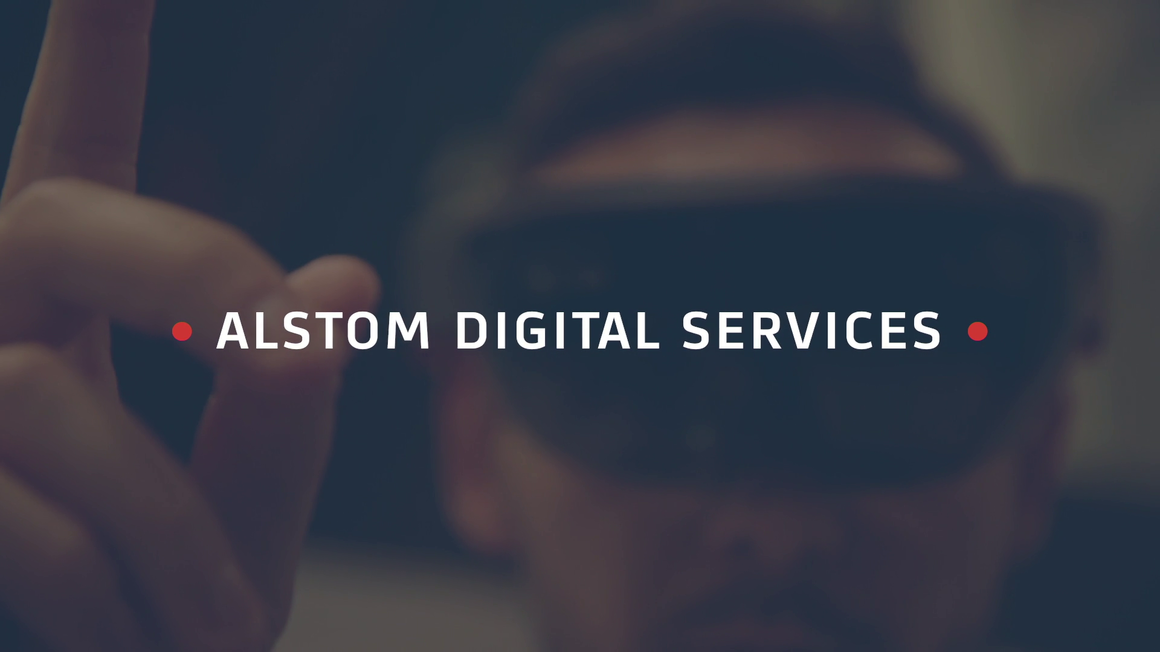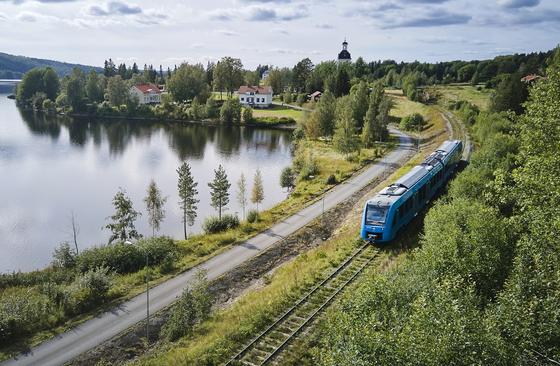
Services: It’s a people business
Services are a critical part of the rail business, ensuring trains run reliably and safely. Alstom’s Services portfolio covers the full lifecycle of rail assets to meet the needs of our customers and deliver high fleet performance and cost optimisation.

Matt Byrne, President of Services at Alstom, started his working life in finance before settling into rail, an industry he’s been in for 26 years, moving from Virgin Trains to Alstom, Bombardier Transportation and now back to Alstom. When he’s not working, he likes to go running and cycling, and spending time with his two small children.
Connect with Matt on LinkedIn
What makes Alstom a leader in the Services business?
First and foremost, it’s our people. We have 15,000 colleagues around the world. Our people share a strong skillset with the willingness to innovate and a mindset to look for solutions for our customers, which is key in the Services business. We have some of the best people in the industry, without a shadow of doubt. We foster this by developing people. It’s important for us to give our talents the opportunities to expand their horizons, so that we have a high retention rate and a high development rate. Diversity and inclusion is at the centre of all our strategies, as it is critical to ensure we attract the best talent and provide an engaging environment for their potential to be fully realised. Services is a people business.
Our philosophy is very customer-centric. Services, to be successful, has to understand the needs of the customer and be able to respond proactively in addressing those needs.
Thirdly, it is our technologies, processes and procedures. We are investing heavily to make sure that the foundation of what we provide is the safest in the world, the most competitive and the highest performing operationally.
Also, through our five business streams – rolling stock maintenance, parts and component overhauls, asset life management, train operations and system maintenance, and digital solutions – we provide full lifecycle services for the rail industry that cover all aspects of our clients’ needs.
How has the Bombardier Transportation/Alstom integration benefited the Services business?
Both Bombardier Transportation (BT) and Alstom had strong services businesses, but they approached services slightly differently. There was more emphasis on operations and maintenance within BT and more emphasis on digitalisation within Alstom. The integration has led to a complementary merger of philosophies, tools and capabilities. And we also now have a much larger footprint, which allows us to serve the client base in any corner of the world.
In the past, we were two separate companies developing similar technologies. Now, we don’t need to develop the same technology twice and we can invest more and progress faster because of the pooling of resources. We have been able to take a step back and ask where the market is going and provide more comprehensive solutions, tailored to clients’ needs and the needs of the public.
What’s new in the Services portfolio?
New to Alstom is train operations, gained from legacy Bombardier Transportation. This has given us an entirely new strategy about how to grow services and provide much more comprehensive and integrated solutions to our clients.
In addition, we are developing a number of technologies: for example, the new evolution of Alstom’s prognostics tool HealthHubTM. It will take the best of the existing HealthHubTM and the Bombardier Transportation legacy tool, Orbita, and converge those two technologies into a comprehensive single solution.
It allows us to use data to predict potential failures and understand the condition of vehicles better, reducing the need for physical inspection of vehicles, and as a consequence, reducing facility demands and vehicle downtime requirements. It looks not just at the train’s systems, but the entire environment around the systems, such as track and environmental conditions. It has and will continue to transform how trains are operated and maintained.
How does the Services business contribute to sustainability and reducing costs?
The Services business is critical to the development of the environmental footprint of rail worldwide. It brings new technologies to the existing fleet, bringing more environmentally friendly operation, such as our green traction solutions. We retrofit trains, removing polluting technologies such as diesel with newer and greener technologies such as batteries, hydrogen and hybrid propulsion.
The services business, historically, has always tried to extend life, which reduces the environmental footprint because components are used for longer and are not being sent to landfill. We rehabilitate old components and reuse them.
But it goes deeper than that. We lower lifecycle costs and optimise the total cost of ownership, which means rail is more efficient and therefore has a reduced environmental impact. We are constantly improving technologies, processes and tools throughout the business – we ‘steal with pride’ approaches from other industries – to reduce costs and environmental impact and increase efficiency for our clients.
One thing that Alstom is extremely good at is the link between services and rolling stock design. Our experience from Services is fed back into our engineering and design, so that full consideration of how the trains perform in the field is incorporated into the design, optimising it for the service considerations of the future, and reducing the total cost of ownership. In short, we design trains that are progressively more energy efficient, lighter, more reliable, with longer-lasting components and reduced need for maintenance. This has a continuous positive impact on both sustainability and cost.
What is the future services market?
The services market worldwide is a very buoyant market and we will see continued growth. Passenger demand was increasing across the world, but obviously COVID has impacted that, but the need for rail will always be there and will continue to grow. Train operators are under pressure to stimulate passenger growth and make rail even more safe, given the current climate. They also have pressures on costs and efficiency.
Our investments in services are increasing because we see market demand escalating. For instance, with the pandemic, as part of our Healthier MobilityTM portfolio, we have been able to offer different types of filters which eliminate COVID-19, alongside introducing new cleaning techniques and products which kill the virus on contact. So the way we maintain, and present trains has changed.
We’re also constantly innovating to offer customers digital solutions to improve maintenance activities as mentioned earlier, including condition-based and predictive maintenance tools, and solutions for optimisation of fleet planning and monitoring, maintenance workload and execution.
The pressures in the market are positive for our skills because we are able to bring solutions that improve the environmental footprint, drive costs out and improve efficiency and performance.
But I am not complacent, we need to make sure that we continue to develop our people and expand our diversity, so that our skill sets continue to evolve to reflect the changing demands of the industry and our technologies remain cutting edge.
Overall, the positive for the industry is that Alstom is well placed to be able to respond to clients’ commercial pressures, now and in the future.


